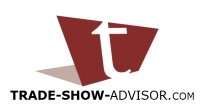Benefits of Modular Displays
While modular displays have been around the trade show arena for quite a while, in recent years they have experienced an explosive growth in popularity. This surge in demand can be attributed to a number of factors.
These include advances in design, dramatic improvements in fabric print-on-demand technologies, increasing need for exhibits that work well with computer monitors, and aggressive pricing.
According to trade show expert Mike Weimar, President of Iconic Displays, modular displays provide the look of a custom display for a fraction of the cost, while also providing far superior flexibility and transportability.
Infinitely Flexible.
The modular in modular displays speaks to the single best feature of these exhibits, which is their flexibility. They are like erector sets or adult lego sets and start with a few basic components:
- Frame components (commonly called "extrusions")
- Connectors
- Corner pieces
- Shelving and monitor brackets
- Kiosks and tabletops
- Lighting
"These components can be configured and re-configured into a nearly infinite variety of shapes and sizes," Weimar explained. "As an example, you can buy a single 10 x 20 modular exhibit that can be re-configured for 10 x 10 booth areas, tabletop shows, and even corporate showroom spaces as needed."
Easily Re-skinned.
Modular exhibits are essentially a skeleton or framework that you can then "skin” with either fabric graphics or printed Lexan graphics panels.
This ability to quickly, easily and affordably re-skin your display is critically important in today’s fast changing market environment. So not only can you easily change shape and size, you can also completely change the messaging and look/feel of your display from show to show.
Maximized Functionality.
Exhibit functionality refers to the ability of a display to hold shelving, monitors, and products, as well as display graphics. Modular exhibits can shine in this area because of their erector-set approach.
The framework elements contain channels and slots that make it a snap to add shelving, display adapters, standoffs for graphics, lighting, and more.
Highly Portable.
To be truly portable, an exhibit must be lightweight, easy to transport, and easy to assemble and breakdown.
Modular trade show displays shine in all of these areas since they use lightweight aluminum extrusions, pack flat into shipping cases, and generally assemble with the use of a single tool.
Compare this with custom displays, which are typically made of medium-density fiberboard, plywood, and laminates; use screws for assembly; and ship in wood crates that weigh so much you need a forklift to move them around.
So the next time you are shopping for a trade show exhibit, consider the benefits of a modular display for enhanced impact, flexibility, and portability – at a cost-effective price.
Related Information - Modular Displays
More about Exhibit Displays
Trade Show Banners
Effective Exhibit Design
Share Success Tips Do you have a great exhibiting or marketing tip that enhanced
your trade show results? Share it here! |



